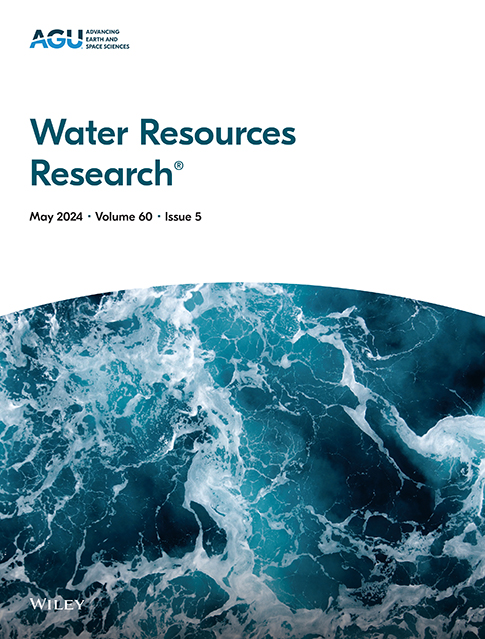Compact Models Assess the Impacts of Floodplain Storage on Suspended Sediment Delivery and Restoration Lag Times: A Chesapeake Bay Case Study
IF 5
1区 地球科学
Q2 ENVIRONMENTAL SCIENCES
引用次数: 0
Abstract
A lag in time occurs between implementing a watershed restoration design and attaining measurable benefits in impaired waters downstream. Where restoration is intended to reduce the delivery of sediment, lag times can be greatly increased by floodplain deposition. Floodplain processes, however, are rarely included in watershed restoration assessments. Here we present equations that can be applied with limited effort to estimate lag times associated with floodplain deposition. The equations determine if floodplain storage is likely to influence the timing of sediment delivery, and they also provide estimates of sediment travel time distributions when floodplain deposition is important. We use a step reduction in upstream sediment supply to represent restoration from Best Management Practices (BMPs), and use this initial condition to derive an analytical solution for the time needed to deliver restoration benefits downstream. Parameters required by these equations can be extracted from sediment budgets and floodplain deposit age data. Illustrative computations for the Chesapeake Bay watershed predict that only 15% of the sediment load can be transported 200 km without being stored on a floodplain. Once deposited, particles remain in place for ∼300 years before remobilization. For distances of 20–75 km, average travel times range from ∼500 to ∼750 years. These results suggest that BMPs employed in the headwaters of the Chesapeake Bay will not reduce sediment delivery within the decadal timescales assumed by the Chesapeake Bay Program. BMPs should be located close to the Bay to achieve maximum efficacy within reasonable time frames.紧凑型模型评估洪泛区蓄积对悬浮泥沙输送和恢复滞后时间的影响:以切萨皮克湾为例
在实施流域恢复设计和在下游受损水域获得可衡量的效益之间存在时间滞后。如果恢复的目的是减少沉积物的输送,则洪泛平原的沉积会大大增加滞后时间。然而,洪泛区过程很少包括在流域恢复评估中。在这里,我们提出了可以用有限的努力来估计与洪泛区沉积有关的滞后时间的方程。这些方程确定了洪泛区蓄积是否可能影响沉积物输送的时间,并且当洪泛区沉积很重要时,它们还提供了沉积物移动时间分布的估计。我们使用上游沉积物供应的减少来代表最佳管理实践(BMPs)的恢复,并使用该初始条件推导出实现下游恢复效益所需时间的分析解决方案。这些方程所需的参数可以从泥沙收支和冲积平原沉积年龄数据中提取出来。切萨皮克湾流域的说明性计算预测,只有15%的泥沙负荷可以在不储存在洪泛区的情况下运输200公里。颗粒一旦沉积,在重新活化之前会在原地停留约300年。对于20-75公里的距离,平均旅行时间范围为~ 500至~ 750年。这些结果表明,在切萨皮克湾计划假设的年代际时间尺度内,在切萨皮克湾源头使用的bmp不会减少沉积物的输送。bmp应设在靠近海湾的地方,以便在合理的时间内发挥最大的功效。
本文章由计算机程序翻译,如有差异,请以英文原文为准。
求助全文
约1分钟内获得全文
求助全文
来源期刊

Water Resources Research
环境科学-湖沼学
CiteScore
8.80
自引率
13.00%
发文量
599
审稿时长
3.5 months
期刊介绍:
Water Resources Research (WRR) is an interdisciplinary journal that focuses on hydrology and water resources. It publishes original research in the natural and social sciences of water. It emphasizes the role of water in the Earth system, including physical, chemical, biological, and ecological processes in water resources research and management, including social, policy, and public health implications. It encompasses observational, experimental, theoretical, analytical, numerical, and data-driven approaches that advance the science of water and its management. Submissions are evaluated for their novelty, accuracy, significance, and broader implications of the findings.
 求助内容:
求助内容: 应助结果提醒方式:
应助结果提醒方式:


